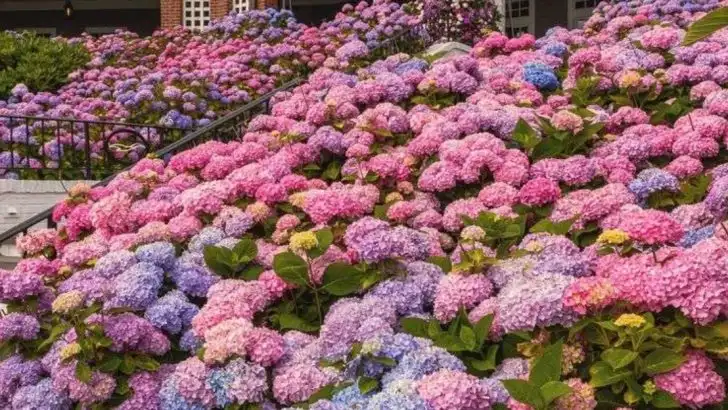When planning your garden, it’s essential to choose foundation plants that not only enhance your home’s curb appeal but also ensure the integrity of your property. Certain plants, with their root systems and growing habits, can cause damage to your foundation, drainage systems, and even the structure itself. However, there are plenty of beautiful and practical choices that won’t compromise the safety of your home.
These 18 foundation plants offer the perfect balance of aesthetic appeal and structural safety, thriving close to your home without posing a risk. From compact shrubs to vibrant flowers and hardy perennials, these plants can soften the edges of your property and add color, all while being kind to your home’s foundation. Whether you’re planting for privacy, curb appeal, or low maintenance, you can enjoy a gorgeous garden without worrying about the long-term damage.
Boxwood Shrubs
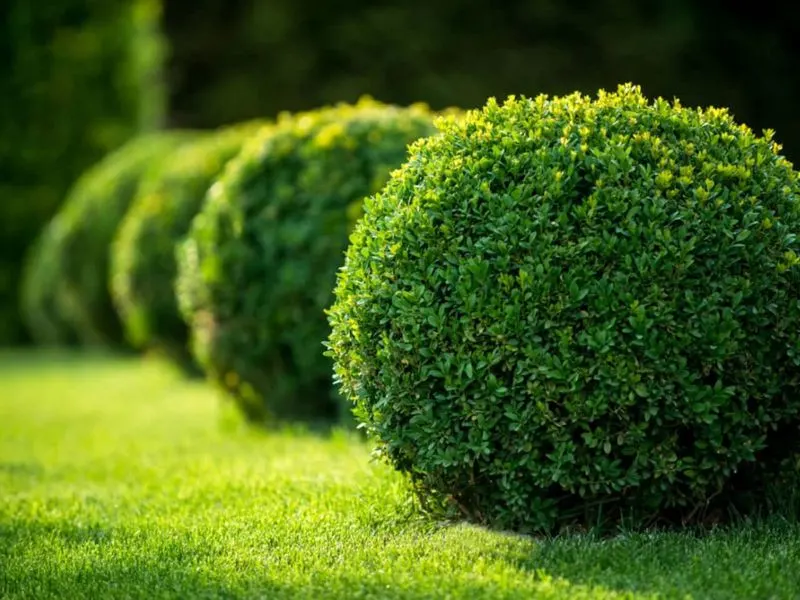
Boxwood shrubs are the epitome of classic elegance, known for their dense, evergreen foliage. Perfect for creating low hedges, they offer a formal touch to any landscape. These hardy shrubs are slow-growing with shallow roots, making them an ideal choice for planting near foundations without causing structural issues. Their ability to thrive in both sun and shade adds versatility to their appeal. With a knack for maintaining shape, they stand resilient against harsh weather, offering year-round greenery. A staple in traditional gardens, their subtle charm can elevate your home’s exterior effortlessly.
Hostas
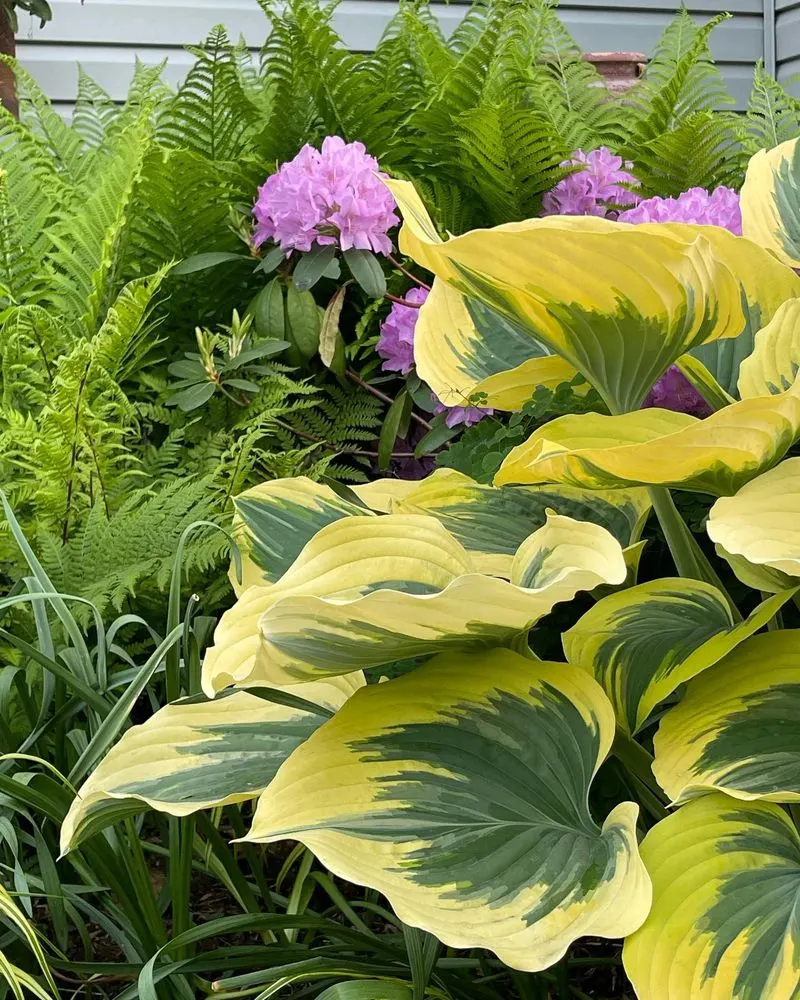
With broad, lush leaves, Hostas are a beloved choice for shaded areas around the home. Their varied leaf patterns and colors can add a touch of whimsy to garden beds. Hostas grow in clumps, which means their root systems are unlikely to invade or damage foundations. These hardy perennials flourish in moist, well-drained soil and require minimal maintenance. A favorite among gardeners for their adaptability, they provide a soft, leafy backdrop that complements other plants beautifully. Whether lining a walkway or accenting a corner, Hostas offer a refreshing splash of green.
Japanese Maple

Japanese Maples bring a touch of the exotic with their delicately cut leaves and graceful forms. Known for their stunning shades of red, orange, and gold, these trees make a striking focal point in any garden. Despite their lush appearance, they possess a non-invasive root system ideal for planting near foundations. Japanese Maples prefer well-drained soil and partial shade, thriving in various climates. With their compact growth habit and seasonal interest, they offer both beauty and practicality. These trees are perfect for adding a touch of elegance without compromising your home’s structure.
Coral Bells
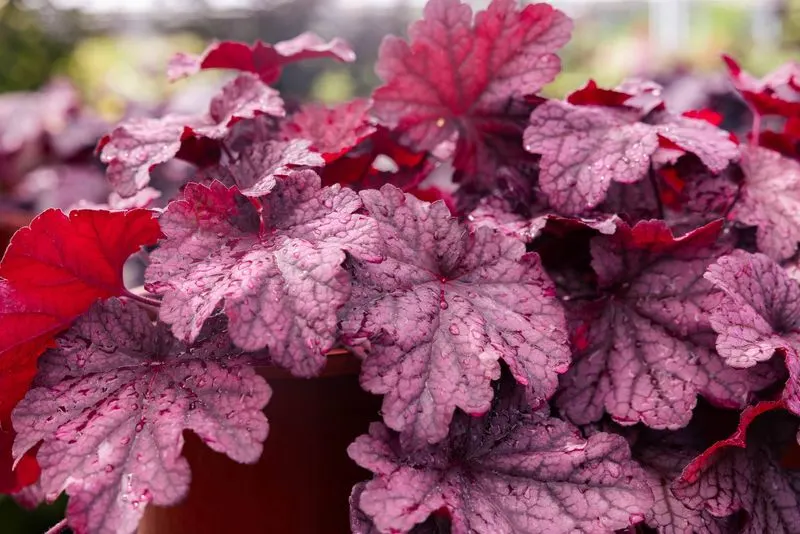
Coral Bells, with their vibrant, multi-colored foliage, add an artistic flair to any garden setting. Known for their bell-shaped flowers and striking leaves, they are a versatile choice for foundation planting. Their compact size and shallow roots make them safe for planting near structures. Thriving in both sun and partial shade, they adapt well to different environments. Coral Bells are not only visually appealing but also attract pollinators like hummingbirds and bees. Their unique colors and textures offer a lively contrast to other plants, enhancing your home’s curb appeal with minimal effort.
Daylilies
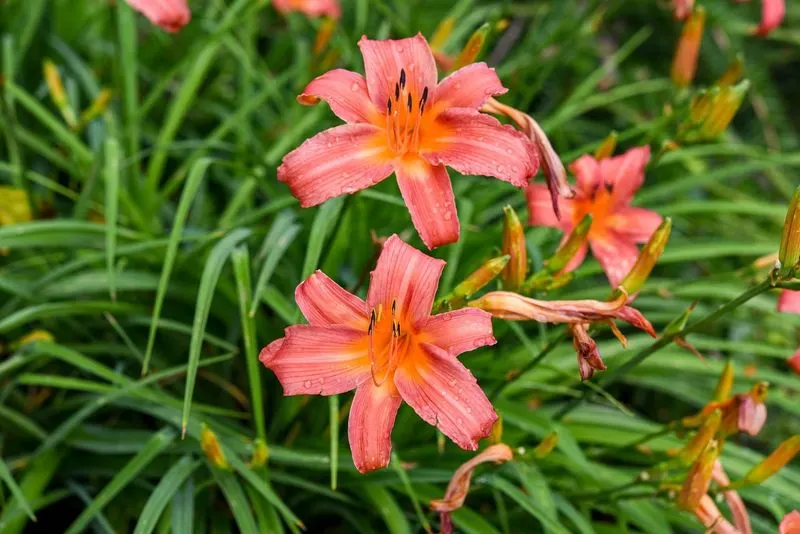
Daylilies are a gardener’s delight, offering vibrant blooms that come in a variety of colors. Known for their resilience, they thrive in almost any soil condition, making them an excellent choice for foundation plants. With a fibrous root system, they pose no threat to your home’s structure. Daylilies bloom prolifically throughout the summer, providing continuous color and charm. Their easy-going nature means they require little care, perfect for busy homeowners. Daylilies can be planted in clusters or as a border, creating a cheerful and inviting atmosphere around your home.
Lavender
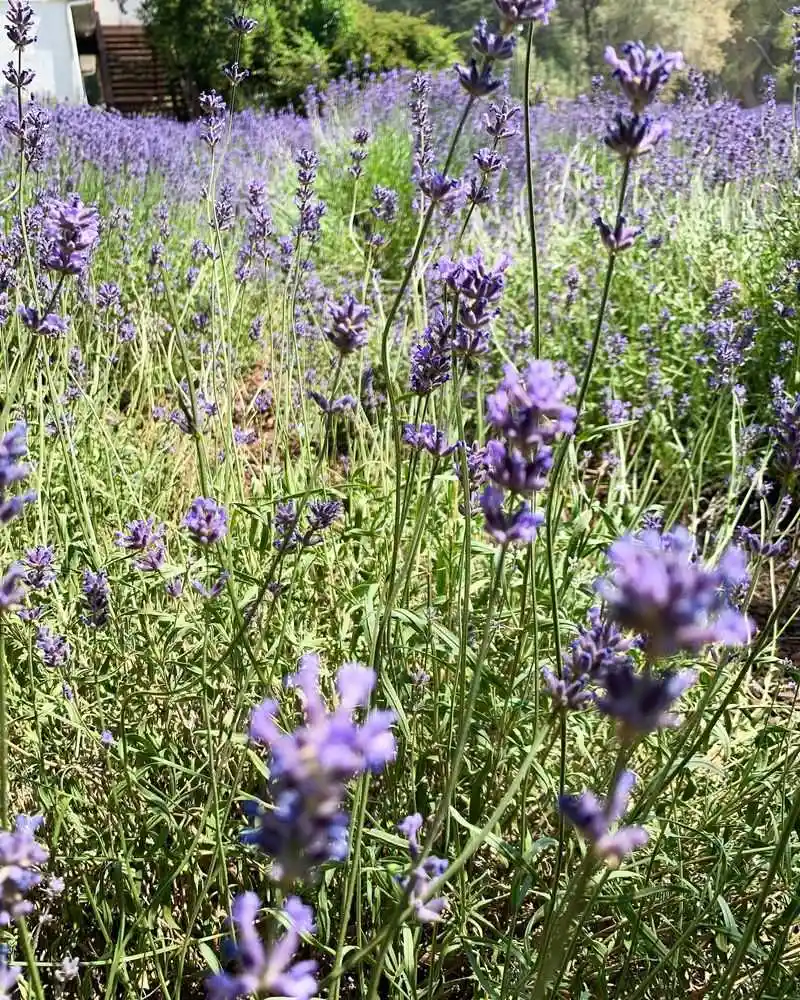
Lavender, with its iconic fragrance and purple blooms, brings a sense of calm and beauty to any garden. Its compact size and bushy growth make it a suitable choice for foundation planting. Lavender thrives in full sun and well-drained soil, offering a low-maintenance option for homeowners. Its root system is non-invasive, ensuring it won’t interfere with your home’s structure. Beyond aesthetics, lavender attracts pollinators and can be used for culinary and aromatic purposes. Whether lining a pathway or filling a planter, its timeless appeal and versatility are unmatched.
Hydrangeas
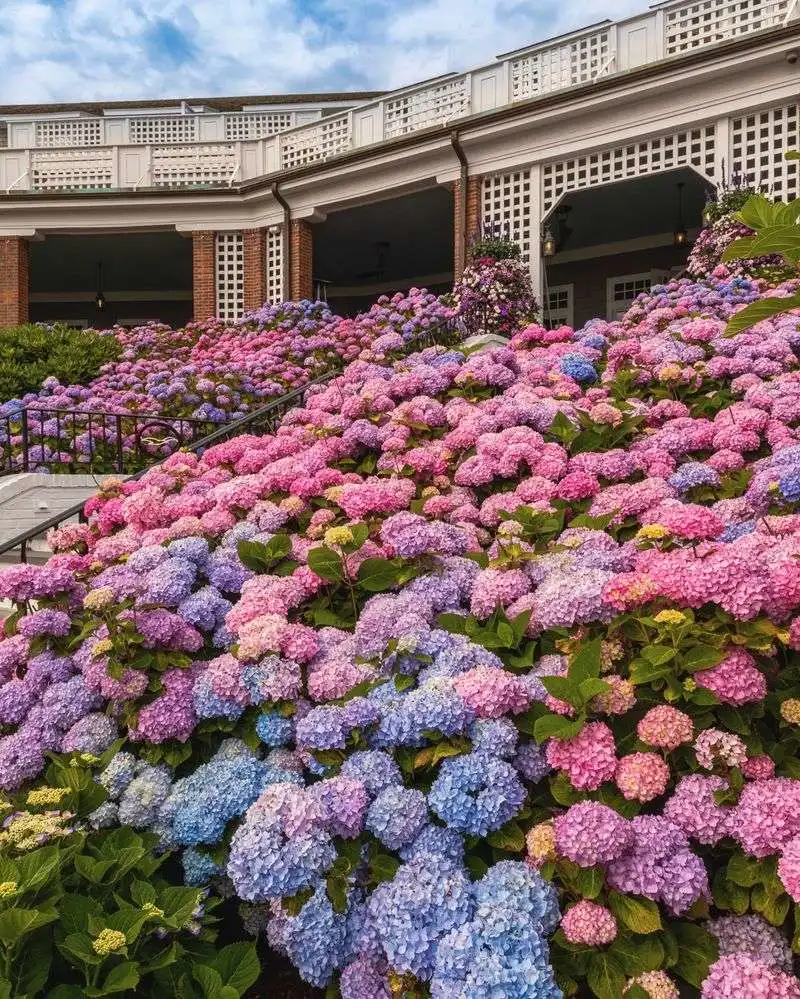
Hydrangeas are known for their large, showy blooms that brighten up any landscape. Their robust nature and preference for well-drained soil make them a safe option for planting near foundations. With a variety of colors from pink to blue, they offer endless possibilities for garden design. Hydrangeas thrive in partial sun and require moderate watering. These beautiful shrubs are not only admired for their flowers but also their ability to change color based on soil pH. They create a stunning visual impact and can be used as a dramatic backdrop or as standalone features in your garden.
Spirea
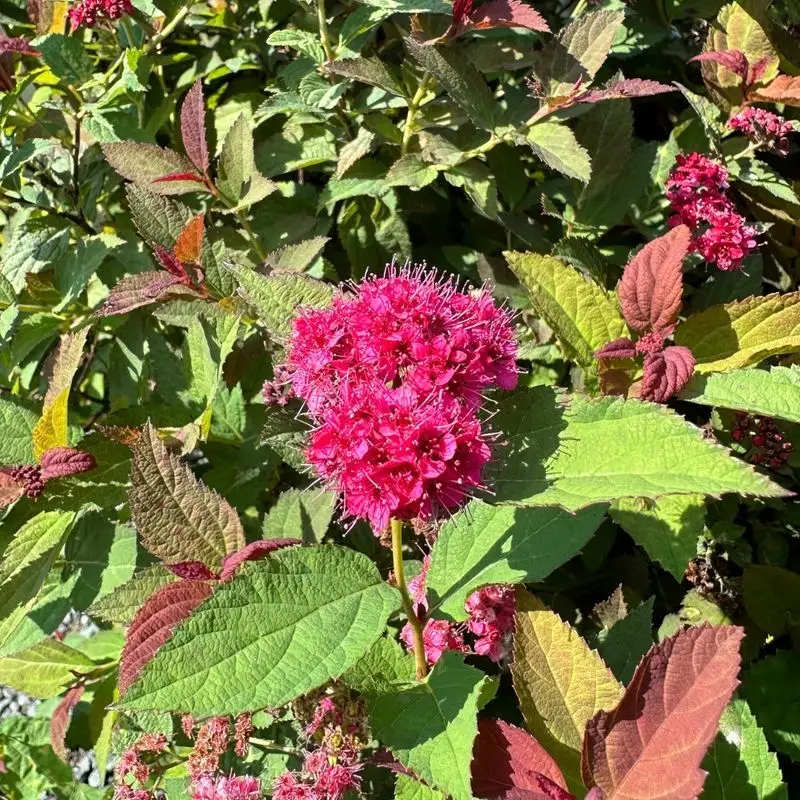
Spirea is a versatile shrub, cherished for its delicate clusters of pink or white flowers. It is perfect for foundation planting due to its shallow root system and manageable size. Spirea thrives in full sun and adapts to a range of soil types, providing a low-maintenance yet visually pleasing choice. Its arching branches fill with blooms in spring, offering a burst of color that signals the arrival of warmer days. As a resilient plant, it withstands pruning well, allowing for easy shaping and control. Spirea’s effortless charm makes it a favorite for enhancing foundation landscapes.
Rhododendrons
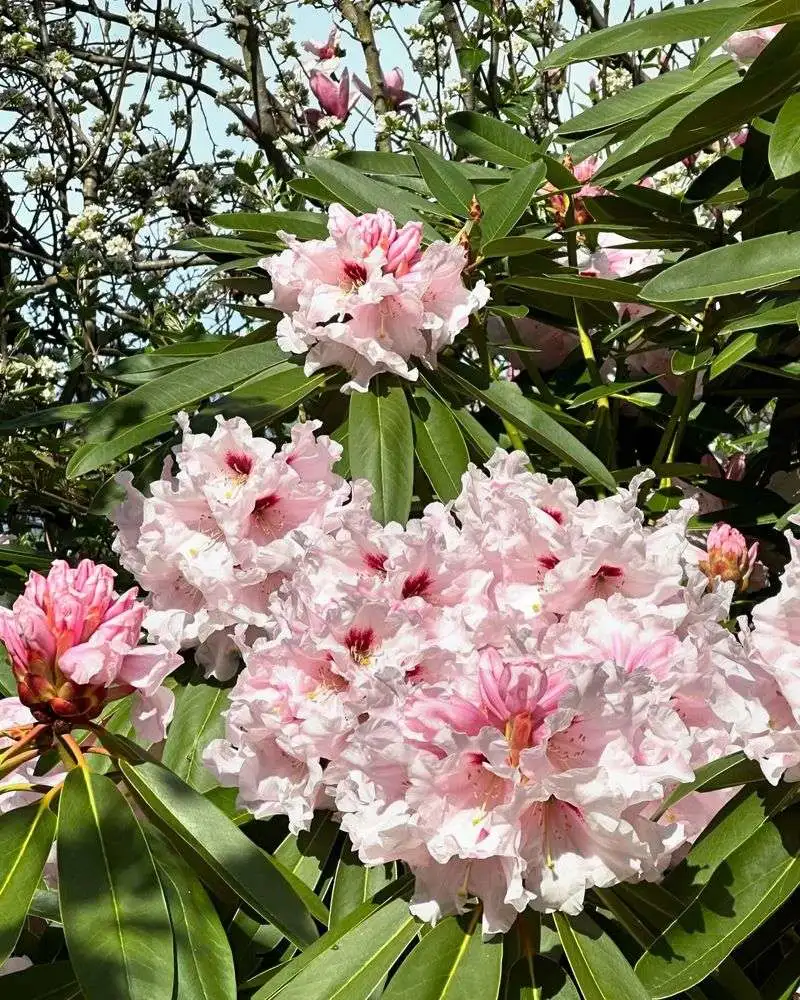
Rhododendrons are celebrated for their spectacular blooms and glossy green leaves. These shrubs thrive in acidic, well-drained soils, making them a suitable choice for foundation planting. Rhododendrons have shallow, fibrous roots that are unlikely to disrupt foundations. They prefer partial shade and offer year-round interest with their evergreen foliage. Known for their springtime floral displays, rhododendrons can transform any garden into a vibrant oasis. With careful placement, these shrubs can provide privacy and a lush backdrop without the risk of structural damage.
Heuchera
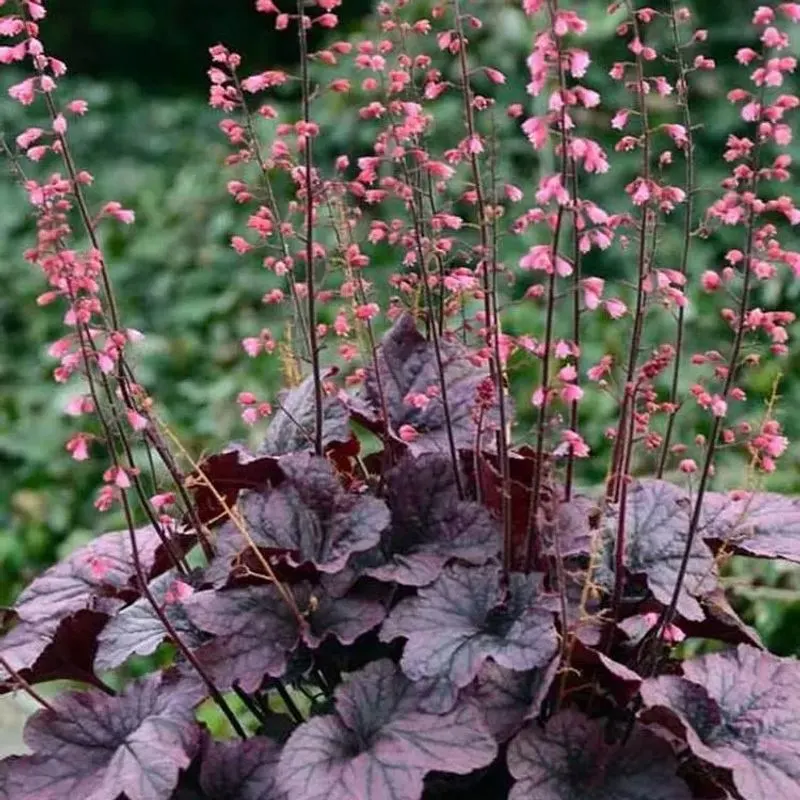
Heuchera, commonly known as Alumroot, dazzles with its rich, variegated foliage and delicate flower spikes. Its compact size and non-invasive roots make it a safe pick for foundation planting. Thriving in partial shade, Heuchera adds depth and color to shaded garden areas. Its leaves come in a spectrum of colors, from deep purples to bright greens, offering endless design possibilities. These plants are low-maintenance and drought-tolerant once established, enhancing their appeal for busy gardeners. Heuchera’s unique charm lies in its foliage, which remains vibrant throughout the growing season.
Ferns
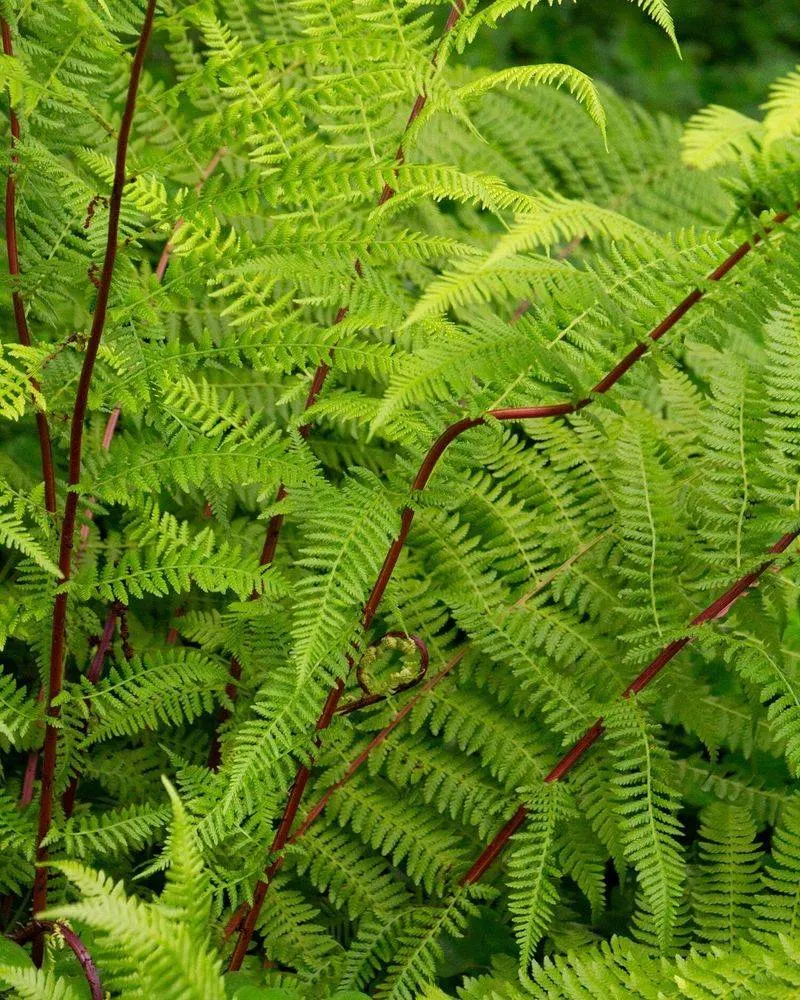
Ferns are a beloved choice for shady garden spots, offering lush greenery with their intricate fronds. Their non-invasive root system makes them perfect for planting near foundations. Ferns thrive in moist, well-drained soil and add a touch of elegance and texture to any landscape. With their ability to grow in shade, they provide an excellent solution for areas where other plants might struggle. Ferns come in various shapes and sizes, allowing for creative combinations in garden design. Their timeless beauty and adaptability make them a staple in foundation plantings.
Astilbe
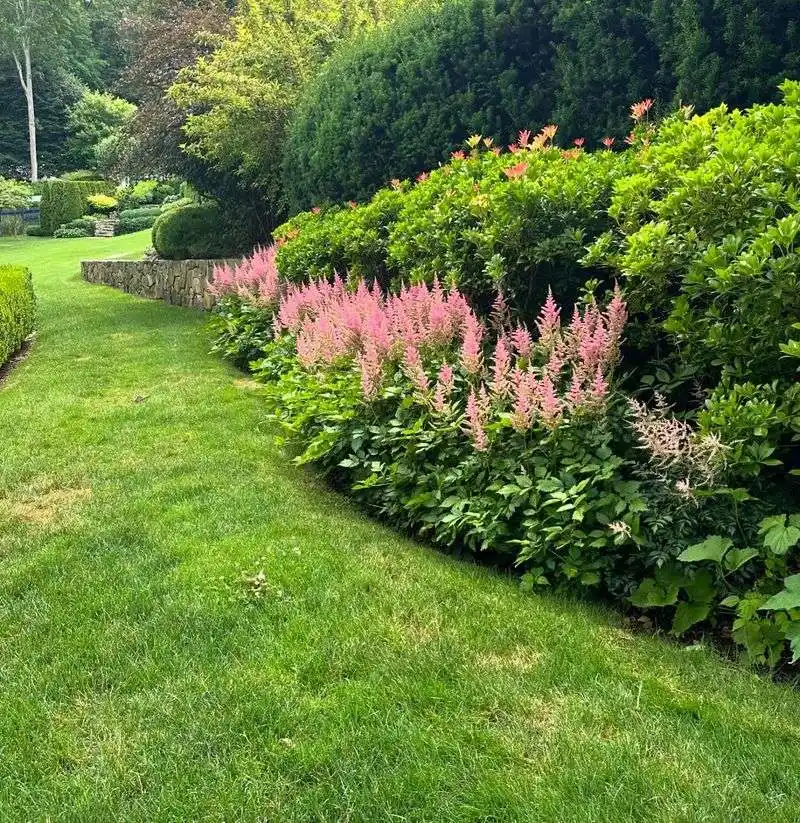
Astilbe stands out with its feathery plumes and vibrant colors, adding a touch of whimsy to shaded garden beds. Ideal for foundation planting, Astilbe thrives in moist, well-drained soil with partial shade. Its root system is non-invasive, ensuring it won’t damage structures. These perennials bloom in midsummer, offering a splash of color when other plants may fade. Astilbe’s foliage remains attractive throughout the growing season, adding texture and interest to garden beds. With its delicate beauty and low-maintenance nature, Astilbe is a cherished choice for enhancing foundation landscapes.
Sedum
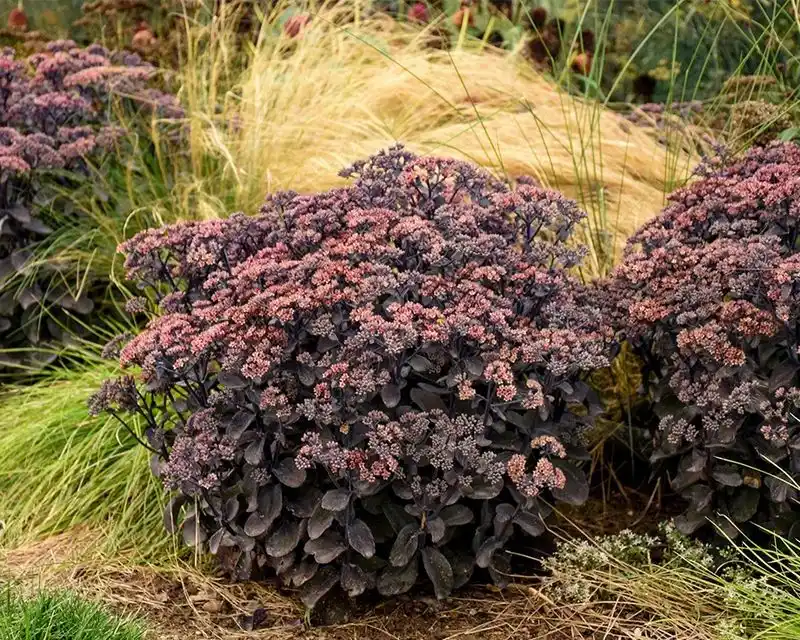
Sedum, with its succulent-like leaves and star-shaped flowers, is a sturdy, drought-tolerant choice for foundation planting. Known for its resilience, Sedum thrives in rocky or poor soil conditions where other plants might fail. Its shallow roots pose no threat to building structures, making it a safe bet for foundation areas. Sedum’s foliage comes in various colors, offering visual interest year-round. These plants are low-maintenance, requiring minimal watering once established. Whether used as ground cover or in rock gardens, Sedum’s distinctive look and hardiness make it a standout option.
Ajuga
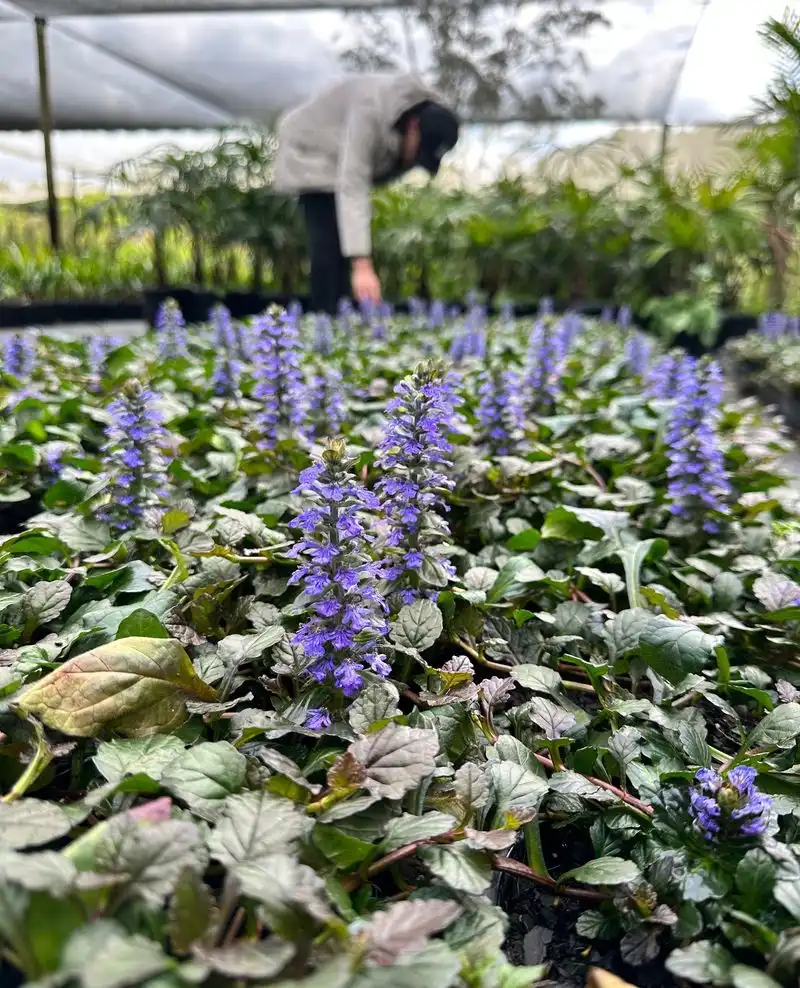
Ajuga, commonly known as Bugleweed, is a versatile ground cover with glossy leaves and vibrant blue flowers. Perfect for areas where grass struggles to grow, Ajuga thrives in partial shade and well-drained soil. Its creeping habit and shallow roots make it suitable for planting near foundations without causing damage. Ajuga’s dense foliage suppresses weeds and provides an attractive carpet-like appearance. This hardy plant requires little maintenance and offers seasonal interest with its colorful flowers and evergreen leaves. Ajuga’s adaptability makes it a practical and aesthetic choice for foundation gardens.
Dwarf Alberta Spruce
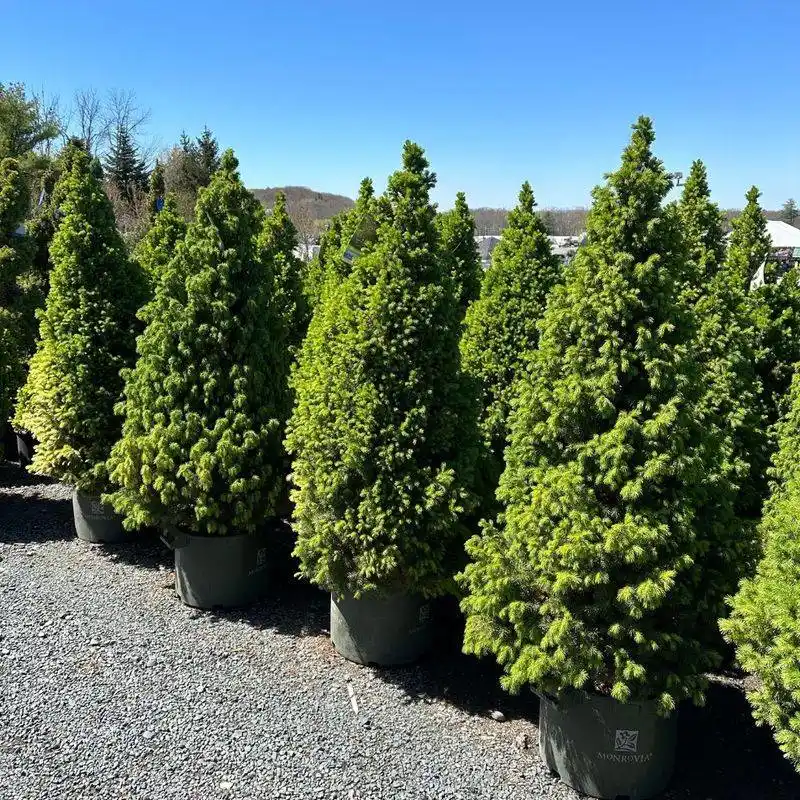
The Dwarf Alberta Spruce is a compact evergreen with a charming conical shape, making it a popular choice for foundation planting. Its slow growth and dense foliage provide year-round interest without overwhelming space. This spruce has a shallow root system, ensuring minimal risk to your home’s structure. Thriving in full sun, it prefers well-drained soil and requires little maintenance. The Dwarf Alberta Spruce’s neat appearance and resilience against harsh weather make it an excellent option for adding vertical interest to your garden. Its tidy form and evergreen nature offer lasting appeal.
Liriope
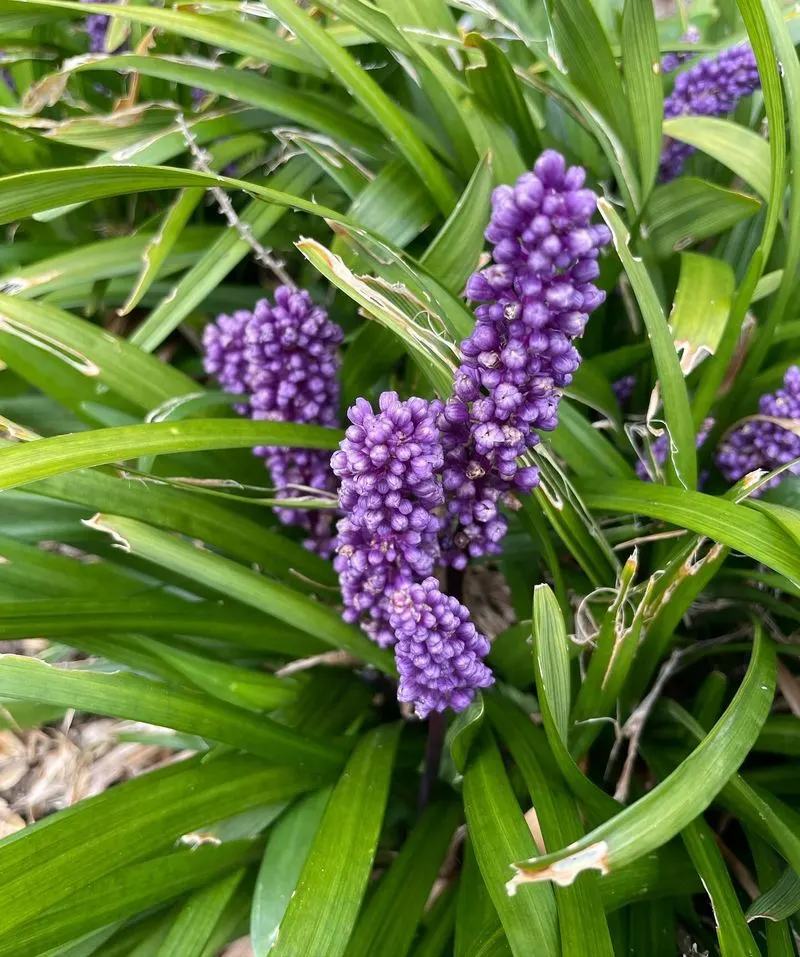
Liriope, often referred to as Lilyturf, is a hardy ground cover known for its grass-like leaves and purple flower spikes. An ideal choice for foundation planting due to its tough, clump-forming nature and non-invasive roots. Liriope thrives in a variety of conditions, from full sun to shade, making it versatile for different garden settings. Its ability to suppress weeds and retain moisture enhances its value as a low-maintenance plant. Liriope’s flowers add color and interest, while its evergreen foliage provides year-round appeal. It’s a practical and attractive addition to any foundation garden.
Ninebark
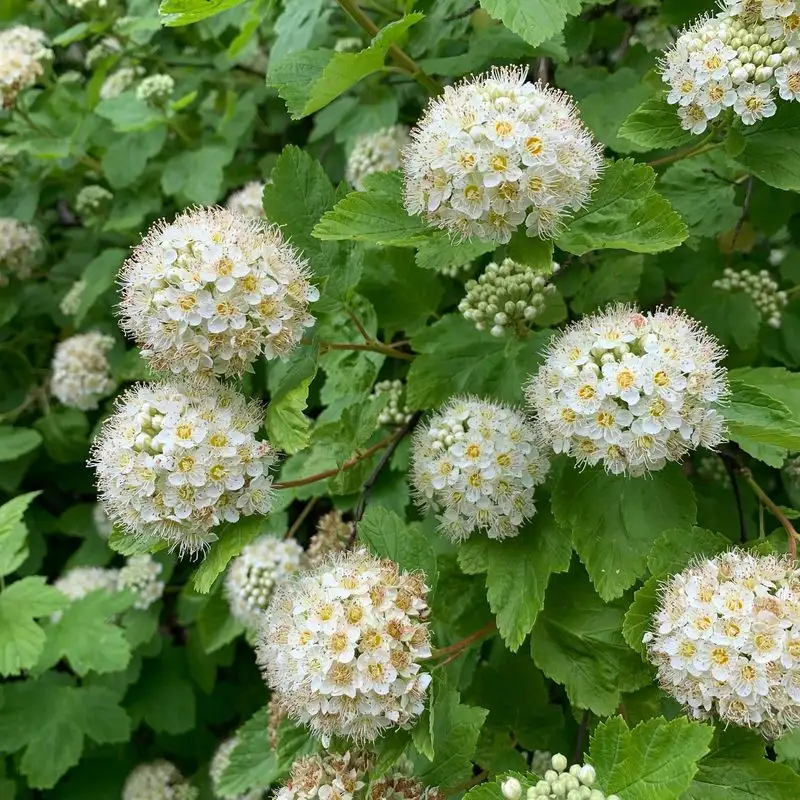
Ninebark is a standout shrub known for its peeling bark and clusters of pink or white flowers. This hardy plant is perfect for foundation planting, with a shallow root system that won’t interfere with structures. Ninebark thrives in full sun to partial shade and is tolerant of various soil types. Its unique bark provides winter interest, while its flowers and colorful foliage enhance gardens through other seasons. With minimal care requirements, Ninebark offers a striking combination of texture and color, making it an appealing choice for foundation plantings.
Blue Star Juniper
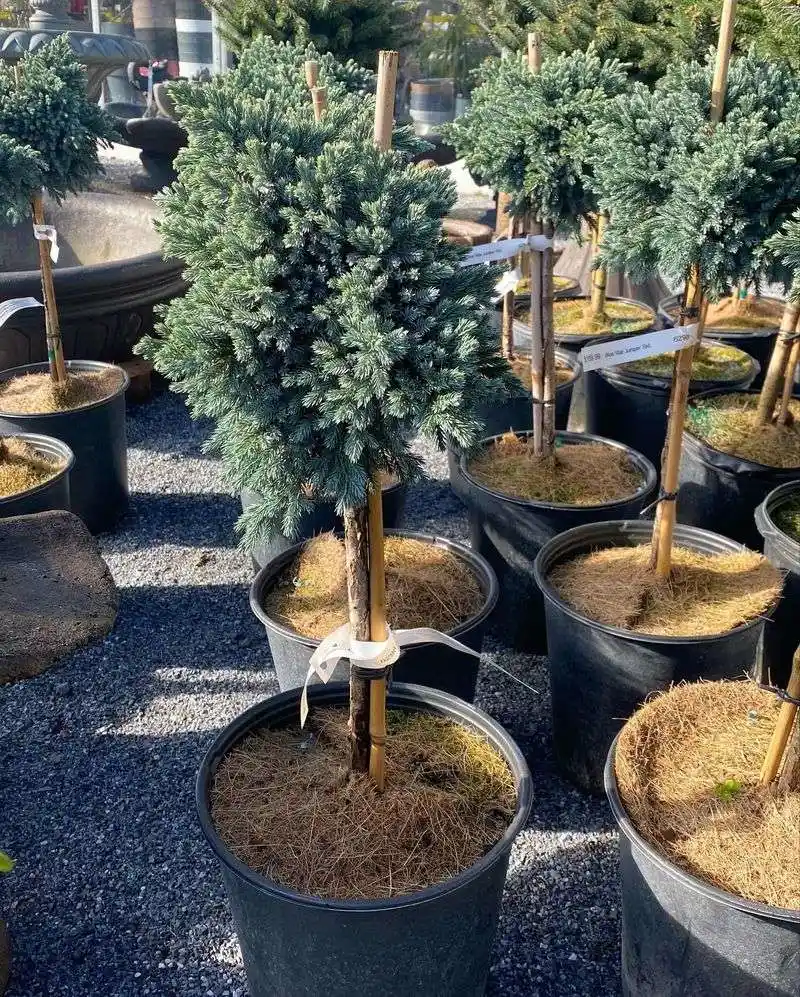
The Blue Star Juniper is a captivating evergreen with silvery-blue foliage that adds a unique color palette to gardens. Its compact size and non-invasive roots make it an ideal candidate for foundation planting. This slow-growing shrub thrives in full sun and well-drained soil, requiring minimal maintenance. The Blue Star Juniper’s drought tolerance and resilience against pests ensure long-lasting beauty and health. Its distinct color and texture create eye-catching contrast in garden designs, offering a modern yet timeless appeal. Its standout characteristics make it a favorite for landscape enhancement.

